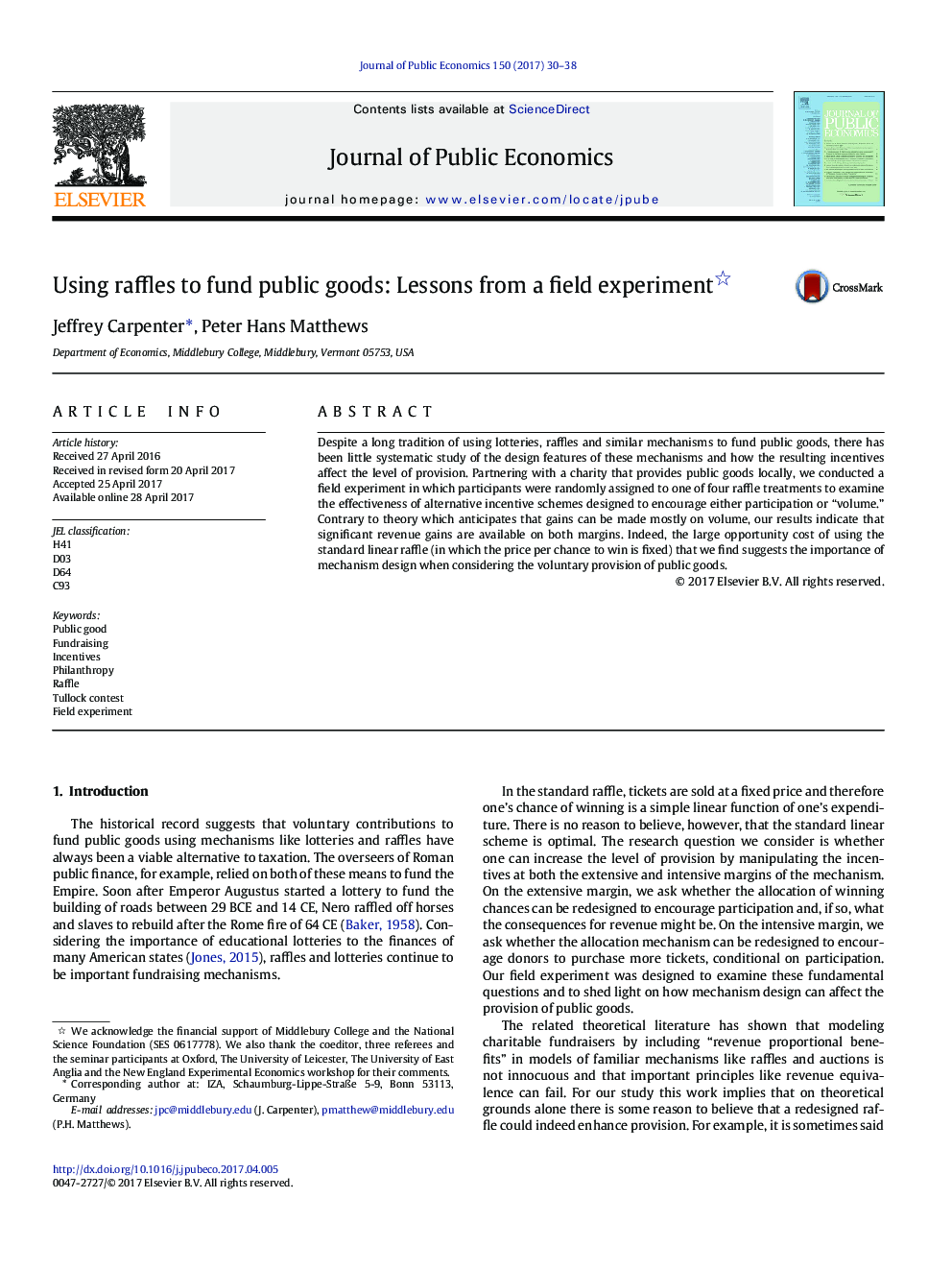| Article ID | Journal | Published Year | Pages | File Type |
|---|---|---|---|---|
| 5101793 | Journal of Public Economics | 2017 | 9 Pages |
Abstract
Despite a long tradition of using lotteries, raffles and similar mechanisms to fund public goods, there has been little systematic study of the design features of these mechanisms and how the resulting incentives affect the level of provision. Partnering with a charity that provides public goods locally, we conducted a field experiment in which participants were randomly assigned to one of four raffle treatments to examine the effectiveness of alternative incentive schemes designed to encourage either participation or “volume.” Contrary to theory which anticipates that gains can be made mostly on volume, our results indicate that significant revenue gains are available on both margins. Indeed, the large opportunity cost of using the standard linear raffle (in which the price per chance to win is fixed) that we find suggests the importance of mechanism design when considering the voluntary provision of public goods.
Related Topics
Social Sciences and Humanities
Economics, Econometrics and Finance
Economics and Econometrics
Authors
Jeffrey Carpenter, Peter Hans Matthews,
